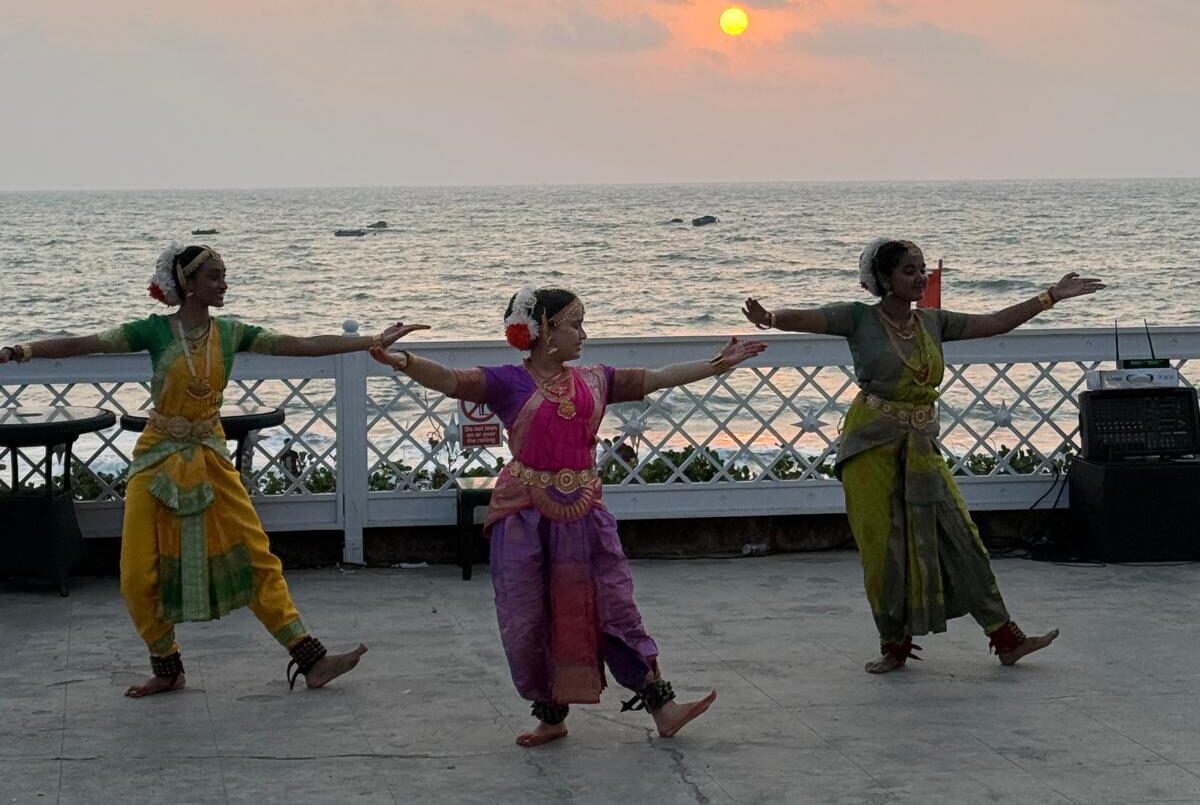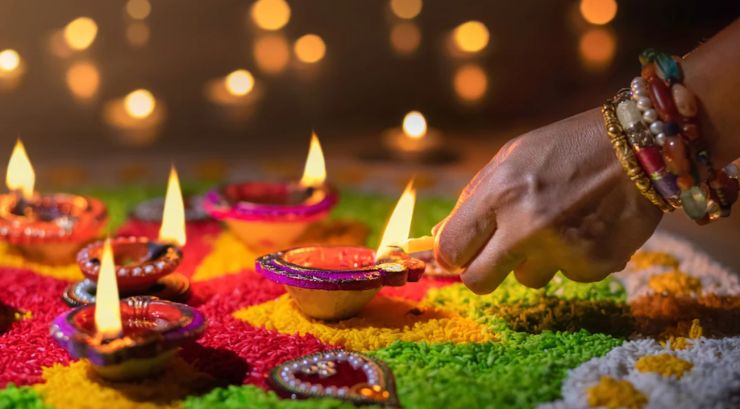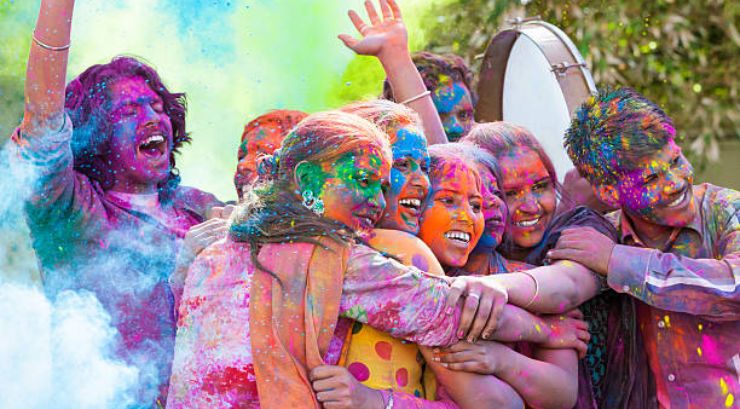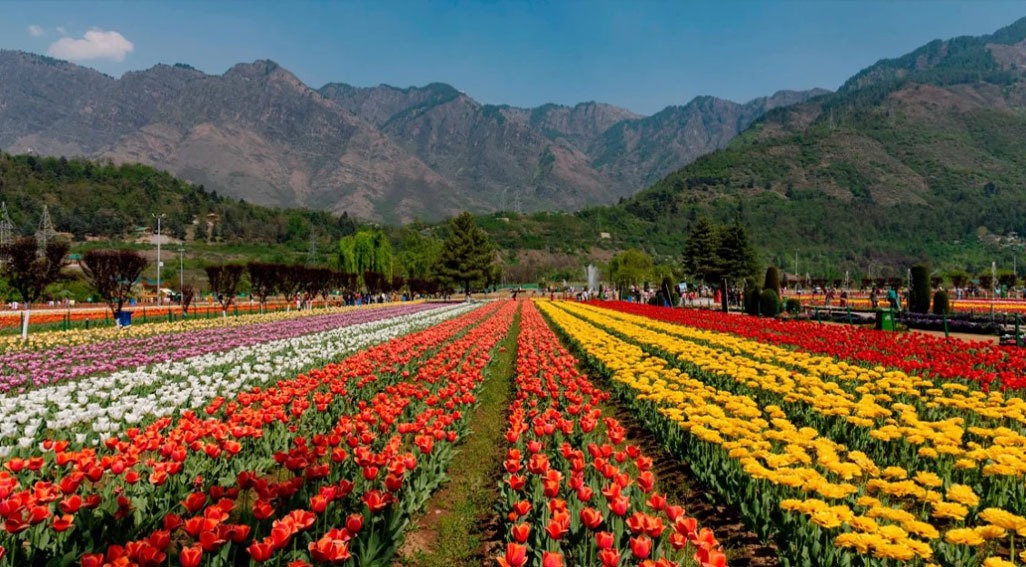Welcome to our savory sanctuary; join us on delectable journey’s where the flavours of India converge, and culinary traditions and cultures come alive. We are here to indulge you in immersive food experiences, introductions to renowned chefs in India who are masters of their craft, and mouthwatering food tours that reveal the hidden gems of local gastronomy. Thank you for subscribing to our newsletter and letting us share our love of food and travel with you.
As the chill of winter fades away and the vibrant colors of spring begin to blossom, I am thrilled to welcome you to our latest newsletter edition. Spring is a season of renewal and a great chance to embrace new beginnings and plan exciting holidays for next year. Our Diwali tour with Chand Sahrawat departs on 26th October and we can’t wait to share the adventures from the tour.
The image above is a dish called “Rechado” – Seafood Mousse stuffed Calamari, Mackarel, Prawn Tempura stuffed with Balchao, Clam chilli garlic butter, Caviar, Coral tuilles and micro herbs. It is a signature dish at an award-winning restaurant, Cavatina by Chef Avinash Martins in Goa. He is one of our favourite chefs in India, and you can learn more about him in the chef interview section below. And we will see him and enjoy his creations when we visit Goa in our tours next year.
The ‘!’ after Goa is intentional. Goa is a paradise for holidaymakers and food lovers. It is the smallest state in India, but it punches above its weight in being one of the most popular holiday destinations for locals and international tourists. Known for its laid-back lifestyle, it is a vibrant blend of sun-kissed beaches, rich cultural heritage, and incredible cuisine that reflects its unique history. It is no coincidence that Goa features on so many of our itineraries.
Nestled along India’s western coastline, Goa’s rich history spans over 2000 years, with its earliest traces dating back to the 3rd century BC. However, the most significant period in Goan history began in 1510 when the Portuguese conquered the region, initiating 450 years of colonial rule that profoundly impacted Goan culture, architecture, and society. This long Portuguese influence resulted in a unique blend of Eastern and Western cultures, evident in Goa’s cuisine, music, dance, and architecture.
The Portuguese rule of more than 4 centuries ended as recently as 1961, and Goa became part of India, eventually achieving statehood in 1987. Today, Goa is renowned for its beautiful beaches, vibrant nightlife, and distinctive culture that seamlessly fuses Indian and Portuguese elements. The 12th century Hindu temples and colonial era Cathedrals signify the unique cultural blend of Goa. It is perhaps one of the few places in India which comes alive during both Diwali and Christmas.
Because of its nightlife and beach parties, Goa is a magnet for partygoers from around the world. Growing up in India, I vividly remember every New Years Eve party celebrated with friends in Goa. It used to be a 12- hour overnight bus ride from home but was so worth it! Goa has always been my happy place in India, and now it is the favourite destination for my kids (as you can see by the glee on their faces in the pic above) and is a must do on every family holiday to India. I recently attended a family wedding in Goa… the beach wedding with the sunset as a backdrop was something special.
While we are in Goa, our flavour of the month must be Goan cuisine.
Goan cuisine is a vibrant celebration of flavors. With its coastal location, fresh seafood such as pomfret, prawns and crabs play a starring role. Imagine savoring a plate of spicy prawn balchão, where the prawns are cooked in a fiery red masala that tingles the taste buds and chasing that down with a cold beer in a beach shack with your toes in the sand… that’s Goa for you.
Goan food is a beautiful fusion of Portuguese and Indian influences, with ingredients like coconut, kokum, and local spices adding depth to every dish. The Portuguese introduced ingredients such as potatoes, tomatoes, and chillies, which were previously unknown in the region. The use of vinegar, also introduced by the Portuguese, is a hallmark of Goan Catholic cuisine, adding a distinctive zing to many dishes. The Pork Vindaloo is an iconic Portuguese-Goan dish which is on the menu of many Indian restaurants in New Zealand.
Complementing the vibrant food scene is Goa’s iconic spirit, Feni. Made from cashew apples, Feni is a potent, aromatic liquor that has been enjoyed in Goa for over 400 years. It is the traditional drink and is often consumed neat, embodying the spirit of Goa itself… bold, distinct, and full of character. No wonder it is a hero ingredient in Chef Avinash’s favourite dish in his restaurant.
I have enjoyed meals in many great restaurants around the world. But the meals I have most fond memories of are the ones I shared with our staff in our fields. My granny used to carry food in big baskets for our staff working in our fields in Goa. It was simple food like rice, different types of curries, fried fish, etc., and I remember the joy of sharing the food with them in the rain under the shade of an umbrella or a tree.
3. What is your favourite dish on your restaurant menu?
“Prawn who drank the Feni”, which is my take on the classic Goan Prawn Curry, served in a coconut shell and flambe with Feni.
4. Who is your culinary hero?
I admire a lot of chefs around the world, but my culinary hero is my grandmother.
5. What is your favorite holiday destination in the world?
Puerto Vallarta in Mexico. It has very similar tropical vibes to Goa.
6. What’s a current food trend that you are excited about?
I don’t really follow trends. I do whatever I feel is close to my heart, my passion and my art. If we can follow the simple trend of eating local, eating seasonal and eating fresh, it will do wonders to our wellness and to the environment.
7. What is the pro-tip that you can share which us mere mortals can use in our kitchen at home?
Always cook fresh. Try not to store food in the fridge and try not to reheat leftovers. Cook and eat in a sustainable way so that the children of tomorrow can continue to enjoy our beautiful planet.
This month we are shining the spotlight on Cinnamon.
Cinnamon is a spice that has been valued for centuries, not only for its distinct flavor but also for its medicinal properties. Derived from the inner bark of trees belonging to the genus Cinnamomum, it is a staple in various cuisines and traditional remedies around the world. The two main types of cinnamon are Ceylon cinnamon, often referred to as “true cinnamon,” and Cassia cinnamon, which is more commonly found in supermarkets.















